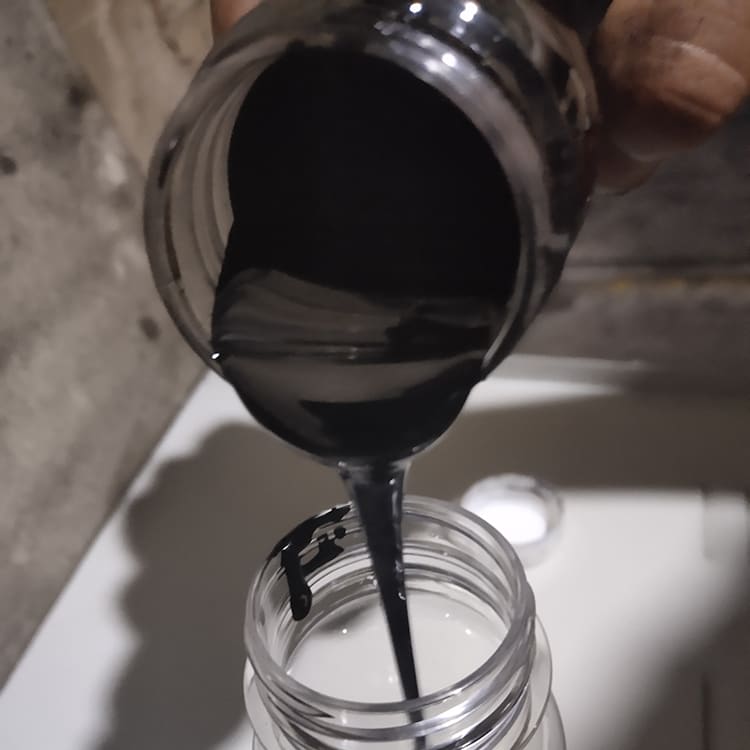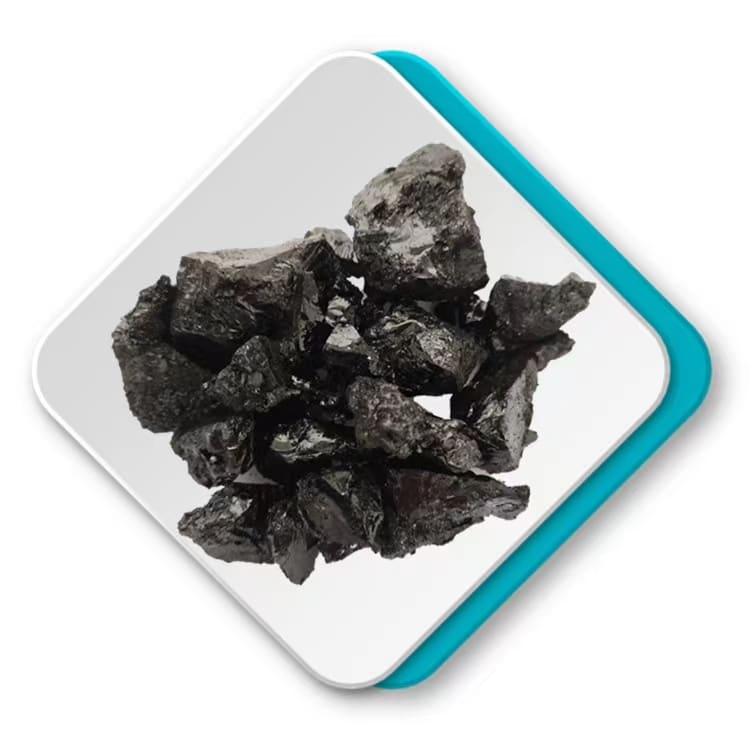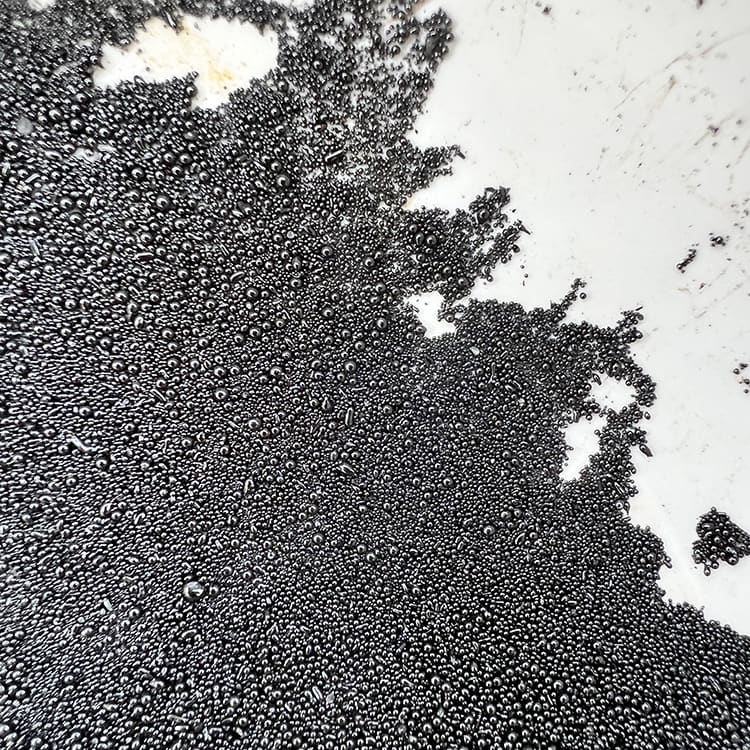Coal tar pitch volatiles (CTPVs) are a complex subject, particularly concerning occupational exposure in industries like aluminum smelting. If you're involved in procurement, like Mark Thompson from the USA, or work within sectors utilizing coal tar products, understanding the potential hazard and how to manage it is crucial. This article aims to demystify CTPVs, discuss their implications, and explore how responsible sourcing and handling, like the high-quality materials we produce at our factory, can contribute to safer work environments. We'll delve into what NIOSH and other bodies say, and why this information is vital for your operations and the well-being of your workforce. For anyone sourcing materials where CTPVs might be a concern, or for those simply wishing to understand this substance better, this guide will provide valuable insights.
What Exactly Are Coal Tar Pitch Volatiles (CTPVs)?
You might be wondering, what are these coal tar pitch volatiles (CTPVs) we hear about? Simply put, CTPVs are a complex mixture of dust, vapors, and gases that are released when coal tar or coal tar pitch is heated. This heating of coal tar is a common process in various industrial applications. Coal tar itself is a thick, black liquid, a by-product of the distillation of coal to produce coke or coal gas. When this coal tar is further processed, for instance, to create pitch, these volatiles are generated. The composition of CTPVs can vary, but they are well-known to contain a range of polycyclic aromatic hydrocarbons (PAHs).
These PAHs are a group of over 100 different chemical compounds, many of which are of concern to environmental health. Some of the specific PAHs often found in CTPVs include familiar names to those in the industry, such as pyrene, anthracene, and phenanthrene. It's important to understand that coal tar is used in many sectors, and the release of these volatiles is an inherent part of processes involving its thermal treatment. As a factory specializing in High Quality Coal Tar Pitch Factory and Supplier, we are acutely aware of the nature of these materials and the importance of understanding their characteristics. The primary concern with CTPVs arises from the potential for occupational exposure and the associated health hazard.

Why is Occupational Exposure to CTPVs a Significant Concern?
The primary reason occupational exposure to CTPVs is a major concern is due to their carcinogenic properties. Many of the PAHs within coal tar pitch volatiles are classified as known or suspected human carcinogens. This means that prolonged or high-level exposure can increase the risk of developing certain types of cancer. The International Agency for Research on Cancer (IARC), part of the World Health Organization, has classified coal tar pitch as carcinogenic to humans (Group 1). This isn't a matter to be taken lightly, and it underscores the need for stringent controls in workplaces where exposure to coal tar pitch is possible.
Beyond the risk of cancer, exposure to CTPVs can lead to a range of other health effects resulting in both acute and chronic conditions. These can include skin irritation and photosensitization (making the skin more sensitive to sunlight), as well as respiratory problems. Workers exposed to coal tar products may experience symptoms like coughing, wheezing, or bronchitis. Therefore, understanding and managing the hazard associated with CTPVs is not just a regulatory requirement but a moral imperative for protecting worker health and safety. The goal is always to minimize exposure to the lowest feasible level.
Which Industries, Especially Aluminum Production, Face CTPV Exposure Risks?
Several industries involve processes that can lead to occupational exposure to coal tar pitch volatiles. One of the most significant is primary aluminum production. In aluminum smelting, particularly using Söderberg technology or in the production of prebaked anodes, coal tar pitch is used as a binder for carbon anodes. The high temperatures involved in these processes lead to the volatilization of PAHs. This makes aluminum manufacturing a key area of focus for CTPV management.
Other industries with potential CTPVs exposure risks include:
- Coke oven operations: Workers at coke oven plants are among the most studied populations for CTPVs exposure and its health effects.
- Coal tar distillation plants: Where coal tar is processed into pitch, creosote, and other products.
- Roofing: The application of coal tar-based materials for flat roof waterproofing can release CTPVs, especially when heated.
- Paving: Some specialized asphalt applications, though less common now, might involve coal tar.
- Graphite electrode manufacturing: Pitch is used as a binder here as well.
- Foundries: Coal tar pitch is sometimes used in refractory materials or mold washes.
In my experience as a supplier of products like High temperature asphalt, I've seen how diverse the applications of these materials can be, and it reinforces the need for awareness across multiple sectors.
How Does CTPV Exposure Typically Occur in the Aluminum Industry?
In the aluminum production process, especially in smelters, coal tar pitch is a critical component. It acts as a binder for petroleum coke to form carbon anodes, which are consumed during the electrolytic reduction of alumina to aluminum. The main route of exposure to CTPVs for workers in this industry is through inhalation of the fumes, dust, and vapors generated when these anodes are baked or during the smelting process itself. The high temperatures cause the pitch to decompose, releasing a complex mixture of PAHs and other volatile organic compounds into the workplace air.
Think about the environment in a potroom of an aluminum smelting facility. It's hot, and there are ongoing electrochemical reactions. This is where the highest potential for CTPVs exposure often lies. Tasks such as anode setting, tapping molten metal, and maintenance activities around the pots can all contribute to airborne exposure. While skin contact with pitch-contaminated surfaces is also a possible route of exposure, inhalation of CTPVs is generally considered the most significant hazard contributing to systemic health effects resulting from these compounds.
What Are the Established Exposure Limits for Coal Tar Pitch Volatiles?
To protect workers, regulatory bodies and health organizations have established exposure limits for CTPVs. In the U.S., the National Institute for Occupational Safety and Health (NIOSH) and the Occupational Safety and Health Administration (OSHA) are key players. NIOSH recommends an exposure limit (REL) for coal tar pitch volatiles (measured as the benzene-soluble fraction of total particulate matter) of 0.1 mg/m³ as a time-weighted average (TWA) for up to a 10-hour workday, 40-hour workweek. NIOSH considers coal tar pitch to be a potential occupational carcinogen.
OSHA has a permissible exposure limit (PEL) for coal tar pitch volatiles (benzene-soluble) of 0.2 mg/m³. It's important to note that these limits are designed to minimize risk, but the philosophy, especially for carcinogenic substances, is often to keep exposure as low as reasonably achievable (ALARA). Additionally, NIOSH has established an Immediately Dangerous to Life or Health (IDLH) value for CTPVs at 80 mg/m³. This IDLH value represents a concentration from which a worker could escape without suffering irreversible health effects or impairment that would prevent escape in the event of respirator failure. Managing exposure effectively requires staying well below these established limits.
How is CTPV Exposure Measured and Assessed in the Workplace?
Measuring and conducting an assessment of CTPVs exposure in the workplace is a critical step in protecting worker health. This typically involves air sampling to determine the concentration of airborne CTPVs. The most common method measures the benzene-soluble fraction of total particulate matter collected on a filter. This fraction is considered to be indicative of the PAHs content. Specialized industrial hygiene equipment is used to draw a known volume of air through a sampling medium (like a glass fiber filter) over a specified period, often a full work shift, to get a TWA exposure level.
Further evaluation can involve more detailed chemical analysis to identify and quantify specific PAHs like pyrene, benzo[a]pyrene, or anthracene. This can provide a more comprehensive picture of the exposure profile. Regular monitoring programs are essential, especially in high-risk areas like coke oven batteries or aluminum smelting potrooms. The data collected from this assessment helps in:
- Determining if exposure limits are being exceeded.
- Identifying high-exposure tasks or areas.
- Evaluating the effectiveness of control measures.
- Ensuring compliance with OSHA regulations.
- Providing valuable toxicity data for epidemiological studies.

What Are the Key Health Effects Resulting from CTPV Exposure?
The health effects resulting from occupational exposure to coal tar pitch volatiles are a serious concern, primarily due to the carcinogenic nature of many of its constituents. Long-term exposure is linked to an increased risk of various cancers. Lung cancer is a significant risk, particularly for workers in environments with high airborne concentrations of CTPVs, such as historical coke oven settings. Skin cancer is another major concern, often resulting from direct skin contact with coal tar products or condensed volatiles, exacerbated by photosensitization. There is also evidence suggesting links to bladder cancer and cancers of the digestive system, and potentially kidney cancer.
Beyond cancer, there are acute and chronic non-cancer health effects. These include:
- Dermatological Issues: Skin irritation, dermatitis, and phototoxicity (severe sunburn-like reactions upon sun exposure after contact with CTPVs).
- Respiratory Problems: Irritation of the respiratory tract, bronchitis, and potentially reduced lung function.
- Eye Irritation: Burning, redness, and discomfort.
The National Toxicology Program's Report on Carcinogens lists coal tars and coal-tar pitches as known human carcinogens. This identification is based on extensive epidemiological studies and toxicology research, including mortality study findings in exposed worker populations. Understanding these risks is the first step towards effective prevention and mitigation.
What Roles Do NIOSH and OSHA Play in Regulating CTPV Exposure?
The National Institute for Occupational Safety and Health (NIOSH) and the Occupational Safety and Health Administration (OSHA) play crucial, albeit different, roles in addressing the hazard of CTPVs exposure in the U.S. NIOSH, part of the Centers for Disease Control and Prevention, is primarily a research institute. It conducts scientific research on various workplace hazards, including chemical exposures like CTPVs. Based on this research, NIOSH develops recommendations for preventing work-related injuries and illnesses, including Recommended Exposure Limits (RELs) and guidelines for controlling exposure. Their "Criteria for a Recommended Standard: Occupational Exposure to Coal Tar Products" is a key document in this area.
OSHA, on the other hand, is a regulatory agency under the Department of Labor. Its mission is to ensure safe and healthful working conditions by setting and enforcing standards and by providing training, outreach, education, and assistance. OSHA establishes legally enforceable Permissible Exposure Limits (PELs) for various substances, including coal tar pitch volatiles. These are part of the broader Air Contaminants Standard for General Industry (29 CFR 1910.1000). While NIOSH recommends, OSHA can regulate and enforce. The Environmental Protection Agency (EPA) also plays a role by regulating emission of PAHs as air pollutants into the general environment, which can indirectly influence workplace practices and reduce overall pollution.
How Can We Effectively Mitigate the Hazard of CTPV Exposure in Occupational Settings?
Mitigating the hazard of occupational exposure to coal tar pitch volatiles requires a multi-faceted approach, often referred to as the hierarchy of controls. The most effective strategies focus on eliminating or reducing the hazard at its source. This includes:
- Engineering Controls: These are designed to remove or reduce the contaminant in the air. Examples include:
- Local exhaust ventilation (LEV) systems at points of emission, such as over coke oven batteries or aluminum smelting pots.
- Enclosure of processes to prevent CTPVs from escaping into the work environment.
- Process modification, perhaps using materials that generate fewer volatiles if feasible.
- Administrative Controls: These involve changes in work practices or procedures. Examples include:
- Minimizing the number of workers exposed or the duration of exposure.
- Implementing specific safe work procedures for tasks with high exposure potential.
- Establishing restricted areas.
- Personal Protective Equipment (PPE): This is considered the last line of defense when other controls cannot adequately reduce exposure. For CTPVs, PPE may include:
- Respiratory protection (e.g., air-purifying respirators with appropriate cartridges for organic vapors and particulates, or supplied-air respirators for higher concentrations).
- Protective clothing to prevent skin contact (gloves, coveralls).
- Eye and face protection.
Worker training and education about the hazards of CTPVs and safe work practices are also paramount. As a supplier, we often discuss handling procedures for products such as our Coal Tar Pitch Flakes to help clients reinforce these safety measures on their end. Regular health and safety audits and evaluation of control measures ensure they remain effective.

Our Commitment at ZGFTY: Prioritizing Quality to Minimize CTPV Concerns
As Allen, representing my factory with its seven production lines in China, I want to assure clients like Mark Thompson in the USA and our partners across North America, Europe, and Australia that we take the concerns surrounding coal tar pitch volatiles very seriously. Our business model is built on supplying high-quality coal tar products and petroleum coke. We understand that the quality of the raw materials can influence the characteristics of emission during their end-use, for example, in aluminum smelting or when used to pave roads with specialized asphalt.
We believe that by focusing on stringent quality control for products like our Medium Temperature Asphalt Block or various grades of petroleum coke, we contribute to more predictable and manageable processes for our customers. While the generation of CTPVs is inherent to the use of these materials at high temperatures, a consistent, high-quality substance can behave more predictably, aiding in the design and effectiveness of control measures. We prioritize transparent communication and ensure our products meet international standards, backed by necessary certifications. This addresses key concerns for procurement officers regarding quality inspection and reliable documentation, helping to avoid issues like certificate fraud which can be a pain point when dealing with less scrupulous suppliers. Our aim is to be a partner in promoting safer occupational environments.
The landscape of managing occupational exposure to CTPVs is continually evolving. There's ongoing research by institutes and within the industry to find ways to further reduce worker exposure and improve safety. This includes exploring modifications to pitch products, such as developing Modified Asphalt and other specialized coal tar derivatives that might have lower volatile content or altered PAHs profiles, potentially leading to reduced CTPVs emission. Innovations in engineering controls, like more efficient ventilation systems or improved enclosure designs for processes like coke oven operations or aluminum production, are also key.
Furthermore, advancements in monitoring technology can provide more accurate and real-time assessment of exposure levels, allowing for quicker interventions. Best practices increasingly emphasize a holistic approach to health and safety management systems, integrating CTPV control into broader environmental health and safety programs. Collaboration between industries (like aluminum, steel, and carbon product manufacturers), regulatory bodies such as OSHA and the Environmental Protection Agency, and research organizations like NIOSH is vital. Sharing knowledge, toxicity data, and successful control strategies will be crucial for protecting the current and future general population of workers from the hazards associated with coal tar pitch volatiles. As a producer, we are committed to staying informed about these developments and adapting our practices to support the safest possible use of our products.
Key Takeaways to Remember:
- Coal Tar Pitch Volatiles (CTPVs) are complex mixtures, primarily containing Polycyclic Aromatic Hydrocarbons (PAHs), released when coal tar or pitch is heated.
- Occupational exposure to CTPVs is a significant health hazard, with links to cancer (especially lung, skin, bladder) and other respiratory and skin conditions.
- Industries like aluminum production, coke oven operations, and roofing face the highest risks of CTPVs exposure.
- NIOSH and OSHA provide guidelines and regulations (RELs and PELs, often based on the benzene-soluble fraction) to limit exposure. IDLH values indicate acute danger levels.
- Mitigation involves engineering controls, administrative controls, and Personal Protective Equipment (PPE).
- The quality of coal tar products can influence CTPVs emission; reputable suppliers focus on consistency and adherence to standards.
- Ongoing research and collaboration are key to improving the management of CTPVs exposure and enhancing worker safety in the industry.
- Understanding and managing the risks associated with CTPVs is crucial for both regulatory compliance and, more importantly, protecting worker health from this potentially carcinogenic substance.
Post time: 05-09-2025





